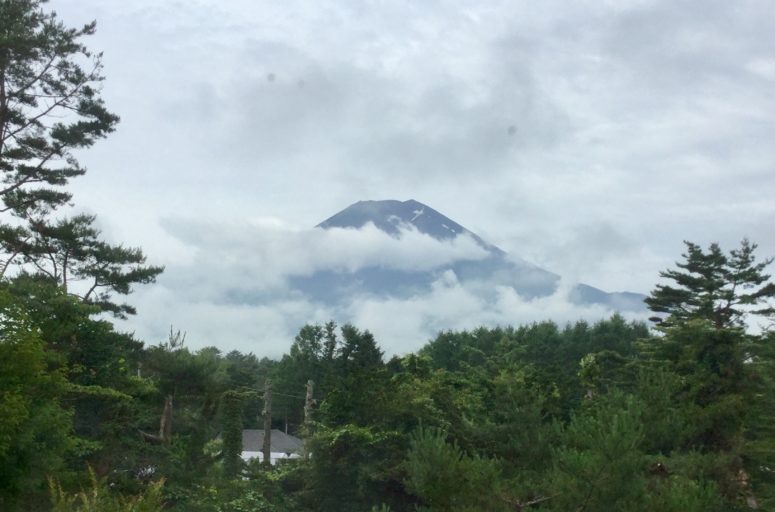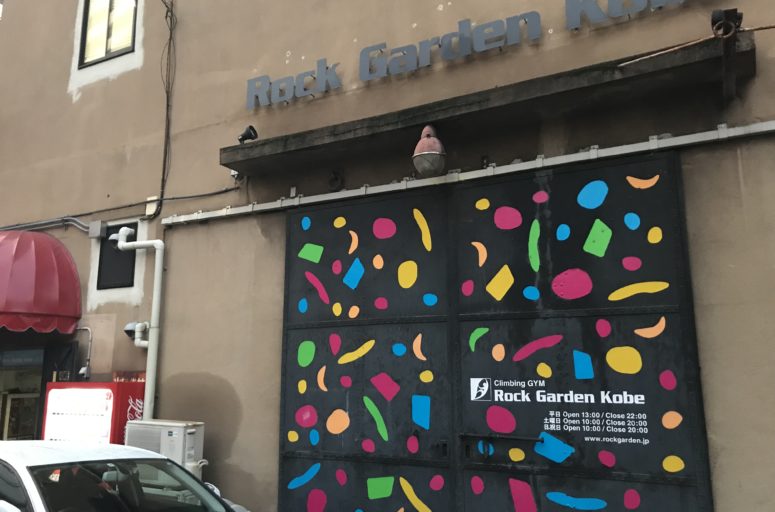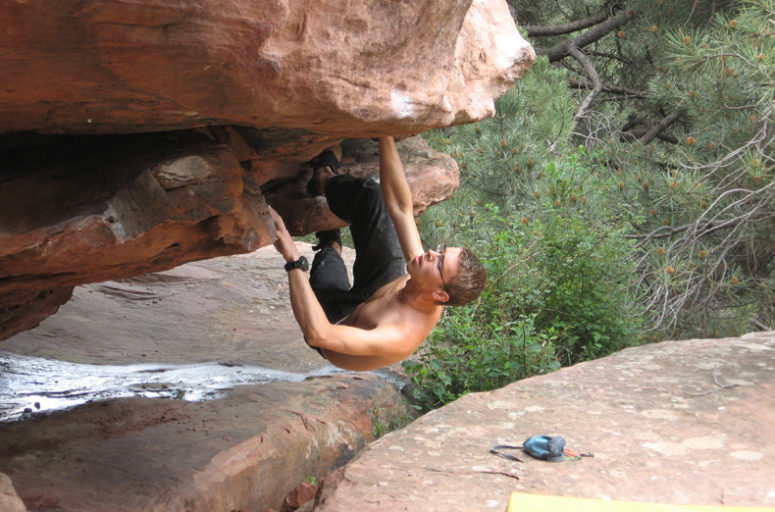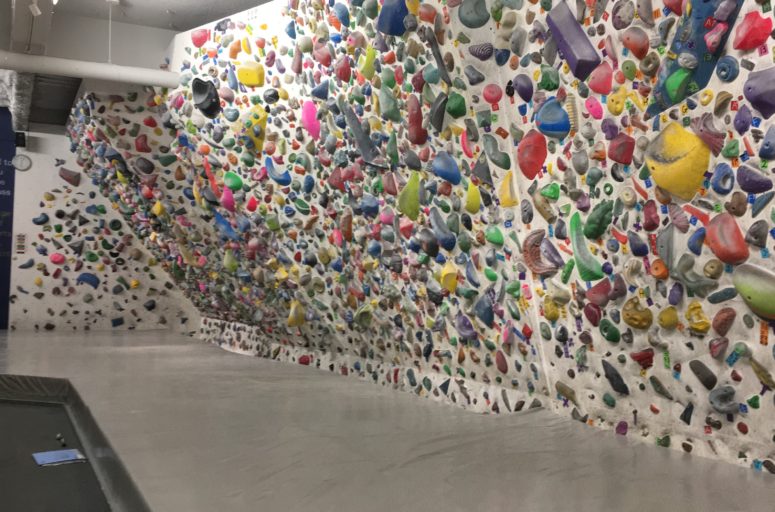Fuji-san is an iconic symbol of Japan and a big draw for locals and tourists alike when visiting the Shizuoka and Yamanashi prefectures. If you’re looking to add this destination to your itinerary, here’s a helpful list of tips for tackling the different hiking routes of Mt. Fuji
When to go:
While Fuji-san can theoretically be climbed all year-round, the official climbing season usually starts in early July lasting until beginning of September. During the official climbing season all service stations are open and the mountain huts can be used for over-night stay. The official climbing season in 2019 is from July 1st to September 1st. Check the official Fuji-san website for details. The mountain is usually most full during the weekends, and less during the week. Additionally, the second week of August is Obon Week (summer holiday), which sees the whole of Japan take vacation. Expect the mountain to be extremely crowded during this time.
How to get there:
Fuji-san has four main trails that lead up to its summit (Yoshida, Subashiri, Gotemba, Fujinomiya). Each trail has a starting “5th Station” which can be reached either with public transport (bus, taxi) or private transport. During the non-climbing season, you can take your car straight up to the 5th Station and park there for a fee. Many visitors come just for the views and the souvenir shops. During climbing season, to avoid overcrowding on the roads, the final few kilometers of road are restricted to buses and taxis only. This means you will need to use a designated car park further down from the 5th Station road and take a shuttle bus from said parking up to the 5th Station. These shuttle buses usually run every 30 minutes from around 6 a.m. onward, but can get quite full during peak days, so plan accordingly and don’t be surprised if you’ll need to wait 1 or 2 buses before you can hitch a ride. Each station is also usually serviced by bus from Shin-Fuji or Fuji-Station, convenient if you plan to arrive in Shizuoka by train. (This website has a good overview of access options.) An example of the 5th Station Fujinomiya and the 5th Station Parking for Fujinomiya shuttle bus are linked on the two maps below:
Options for climbing:
You can either climb Fuji by yourself or choose to take a guided tour. There are also options for renting equipment, like water proof clothing at the 5th Stations, which you can then return when you’re done.
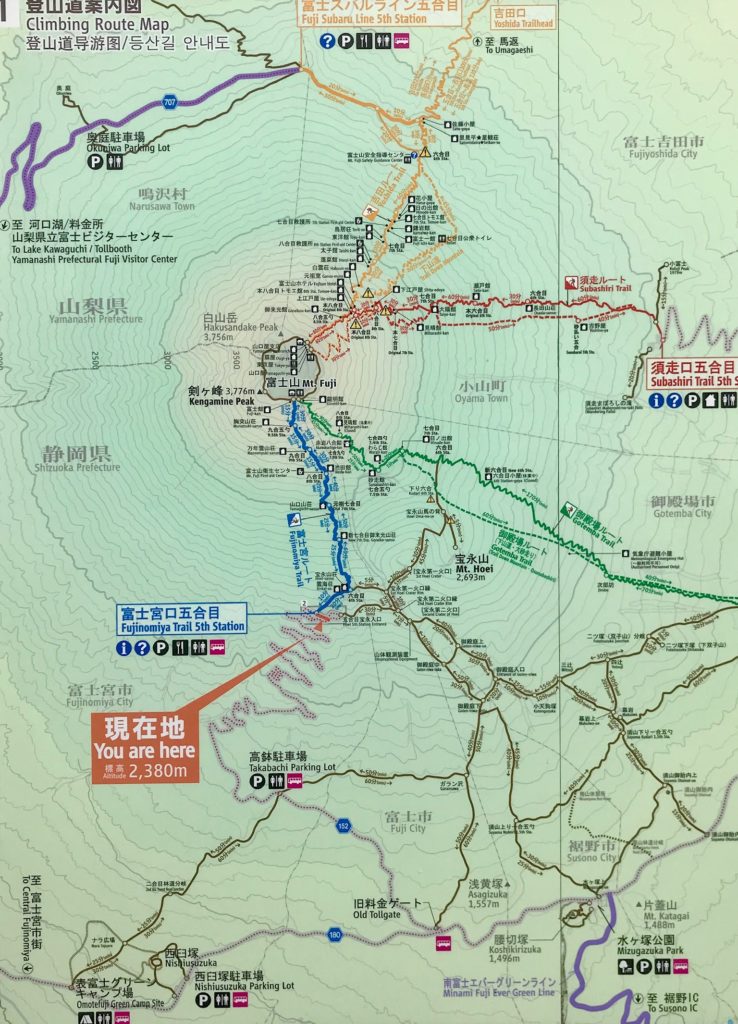
The weather:
Mt Fuji is categorized as having alpine weather conditions. This means that you could be facing a whole range of weather scenarios, from a tranquil summer day to dangerous mountain storms and snow, hail and ice. The weather can change quickly so be prepared. Additionally, Fuji-san is usually covered in snow for most of the year, only thawing from early June. The official Mt. Fuji website and the Japan Meteorological Agency do a good job of monitoring the weather with hourly forecasts, simulations that are useful for planning and live webcams. At the summit crater, temperatures can often be in the low single digits, even at the height of summer.
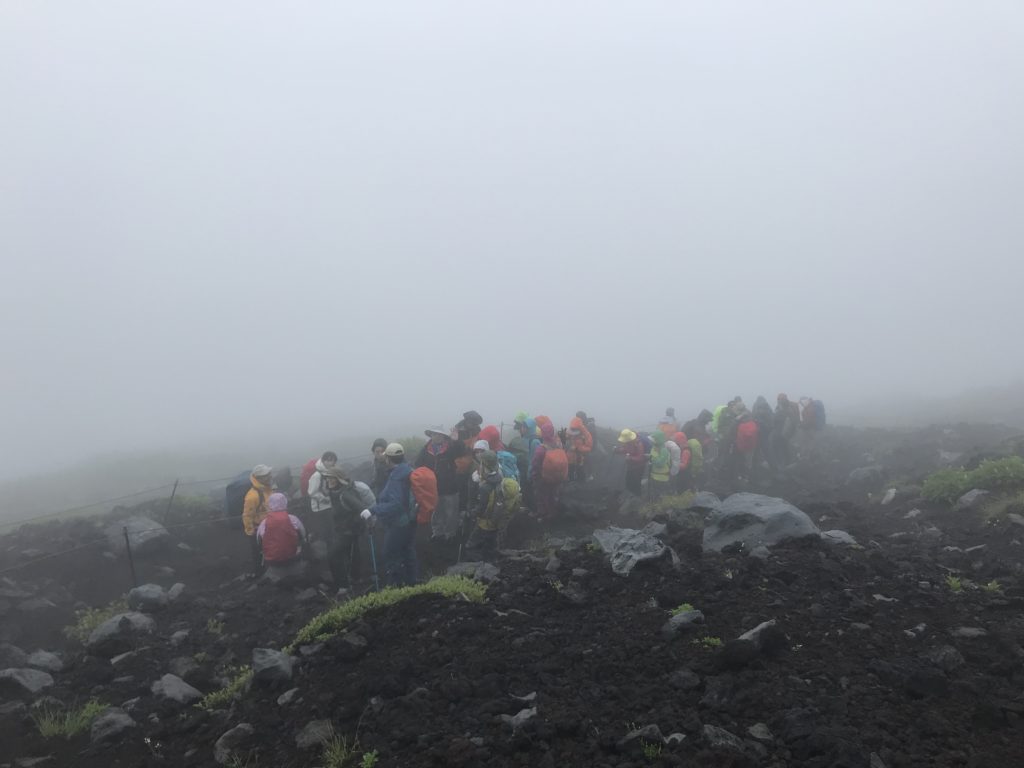
What to bring:
Given the wide range of possible temperatures and climate it’ best to always be prepared. Keep in mind that umbrellas are expressly forbidden on the mountain, so you’ll have to rely fully on water proof equipment:
- Windbreaker
- Softshell
- Raincoat
- Hat
- Thermals
- Gloves
- Backpack with rain cover
- Sunglasses
- Sun screen
- Headlight
- Hiking poles
- Moisture proof plastic bags to store your extra clothes
- Water proof hiking shoes, preferably with medium-hard soles
- Water resistant or water proof trousers
- Oxygen canister
- Toilet paper (yes, just in case…)
- Water (2L per person at a minimum)
- Cash for the huts and lots of coins for the toilets (200-300 Yen per use)
You’ll be able to buy food and drink at the various rest stations, but the options are expensive, so it’s best to do a shop before going and bring your own supplies. One can suffer from mild symptoms of altitude sickness above 3,000 meters (such as headaches, dizziness and inability to sleep well). If you’re worried about this, bring along some pain killers and also nab a canister of oxygen at the local drug store. They are easy to use, weigh very little, cost only a few hundred yen and with a few puffs can provide some much needed relief whenever you’re feeling any oncoming symptoms.
If you don’t have any dedicated water proof gear, you can also get some cheap rain cover equipment at the local sports stores, or even from the 100 Yen stores like Daiso. They have options for full length, tops, trousers or poncho style.
Where to stay:
There are 4 main trails leading up to the crater of Fuji-san. Each of them have numbered “stations” every few hundred meters up the mountain (roughly 1-2 hours hike per station). If you’d like to book yourself in for the night, use this website and contact the station of your choice. Most will offer dinner (rice, curry and tea), a sleeping space with a light futon and sleeping bag, free access to the toilets and a breakfast packet for the morning you set off (juice, bread loaf and snacks). There is no running water or washing facilities at these stations, and soap or toothpaste is not allowed, so keep that in mind. The experience is as bare bones as they come. You’ll be crammed head to-toe in large sleeping rooms with hundreds of other hikers, sleeping shoulder-to-shoulder with strangers. Sleeping might not be the right word, more like trying to rest. Bring an eye mask and ear plugs if you are susceptible to noise and light. Folks will hunker down already from 8 p.m., as most hikers try and set off from 3 a.m. to line up at the crater for the infamous sunrise view.
Duration:
The hike to the top of the mountain takes around 4-5 hours depending on level of fitness and how many stops you take and which trail you choose. The same walk down is much quicker, usually between 2-3 hours. “Bullet-climbing”, going up and returning on the same day, is not recommended due to the overall fitness required and the risk of altitude sickness, however, in my experience, this is an option provided you’ve got a good level of fitness. The challenge is that if you’d like to capture the sun-rise, you’d have to start at mid-night to get there by early morning. If you’re happy with just climbing during the day, then this isn’t an issue. Be warned that there can be queues on the final stretches to the crater as you wait for folks to slowly make their way up the final meters. Make sure you bring along warm clothing, especially if you are planning on waiting for sun-rise early in the morning. With wind chill, it can easily reach zero degrees even at the height of summer.

And there you go, a quick overview of some things to keep in mind for climbing Mount Fuji. Remember, the mountain is considered alpine territory, and is technically still an active volcano, so climb at your own risk. If you feel that you’d rather go with the additional comfort of a guide, then sign yourself up for one of the numerous tours available online. This ensures you’ll have full support of a certified mountain guide and you won’t need to stress with all the admin, just turn up and enjoy. Good luck.
Interested in additional first hand experience on climbing Fuji, why not listen to this podcast from the Japan Times.
